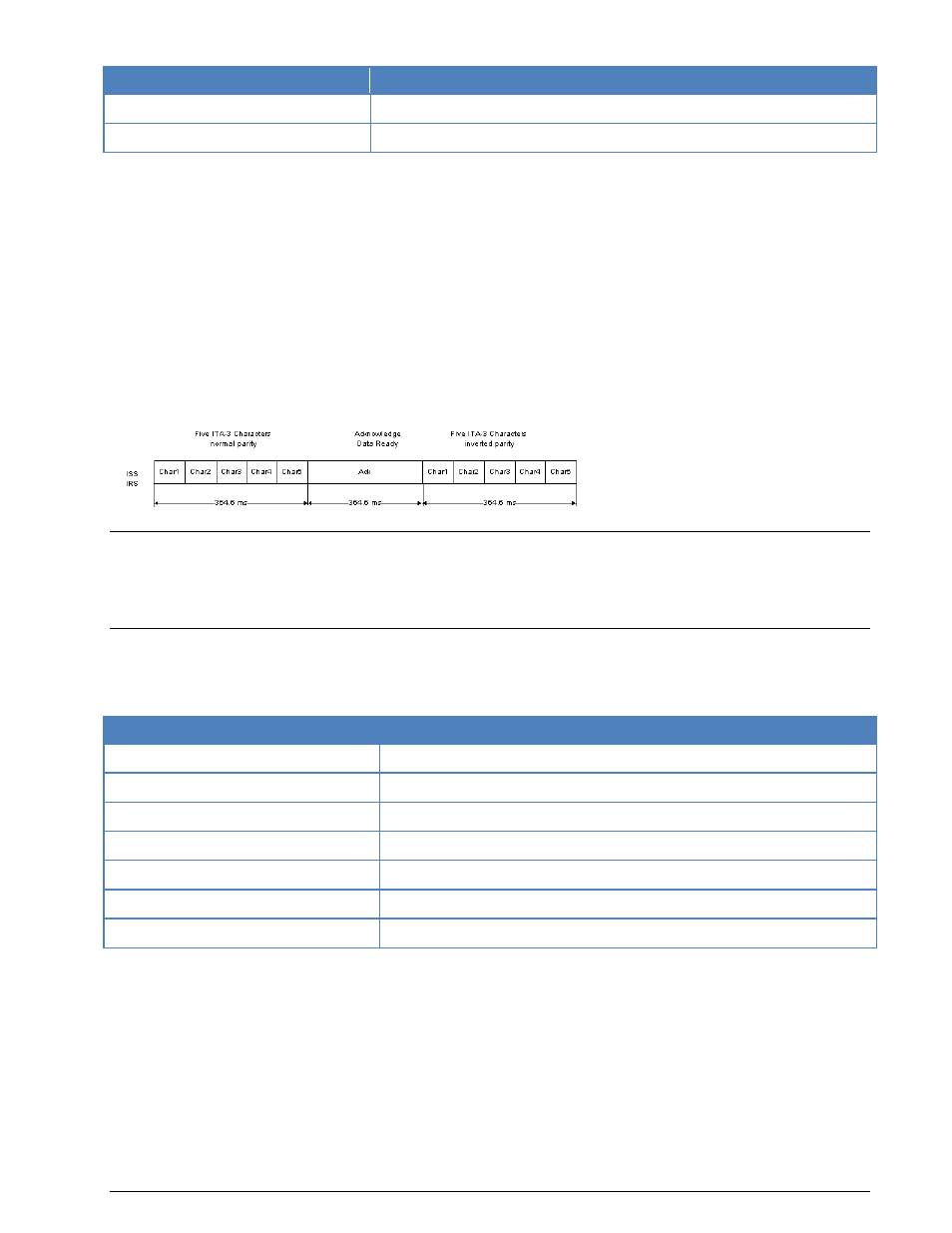Si-auto, Si-fec – Wavecom W61PC V7.5.0 User Manual
Page 226

216
Transmission Modes
WAVECOM Decoder W61PC/LAN Manual V7.5
Parameter
Value
Input format(s)
AF, IF
Additional Info
ITA-3
SI-ARQ operates at symbol rates of 96, 192 or 200 Bd on the radio link.
SI-ARQ uses the ITA-3 alphabet for data transmission and error detection. Data blocks usually consist of 5
or 6 characters.
One transmission cycle is made up of twice the length of a character block. If the information sending sta-
tion (ISS) receives an acknowledgement character, the next data block is sent with inverted phase or po-
larity. However, if the receiving station (IRS) requests a retransmission, the repeated block is sent with
unchanged polarity.
If the ISS does not receive the acknowledgement packet, it transmits a RQ block as is the case with SI-
TOR.
The software automatically detects SI-ARQ block lengths of four, five or six characters and displays this
information after phasing has been achieved. The polarity of the signal is automatically detected.
Transmission Sequence of SI-ARQ at 96 Baud with Five Characters
SI-AUTO
Fully automatic tuning to signal center, shift and transmission modes SI-ARQ (Mode A) and SI-FEC (Mode
B) may be achieved by selecting SI-AUTO mode.
SI-FEC
The SI-FEC sound is similar to the sound of SITOR-FEC. However, SI-FEC is used very seldom and stations
mostly switch to this mode only under extremely poor propagation conditions.
Parameter
Value
Frequency range
HF
Operation modes
Broadcast/Simplex FEC
Modulation
FSK
Symbol rate
96.0 and 192.0 Bd
Receiver settings
DATA, CW, LSB or USB
Input format(s)
AF, IF
Additional Info
ITA-3
SI-FEC operates at symbol rates of 96 and 192 Bd on the radio link.
SI-ARQ stations can switch to FEC broadcasting operation in similarity to SITOR-ARQ (Mode A) and SI-
TOR-FEC (Mode B).
The SI-FEC mode uses the ITA-3 alphabet for data protection. Each character is sent twice, but with a
time delay. The repeated character is transmitted with inverted polarity.
For a pair of characters which have been decoded and recognized as error-free one character is displayed.
If both characters are received in error the underscore (_) character is displayed.
